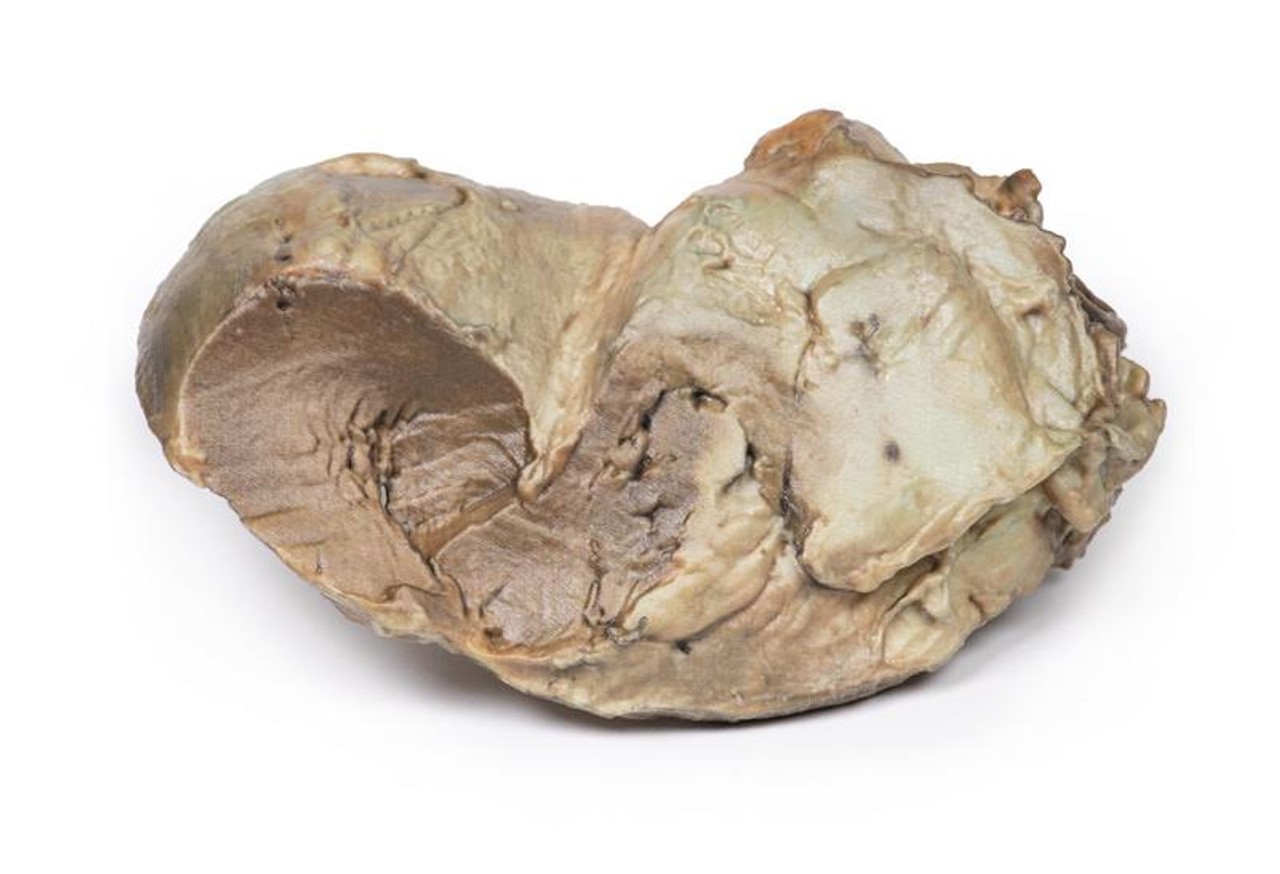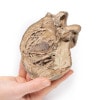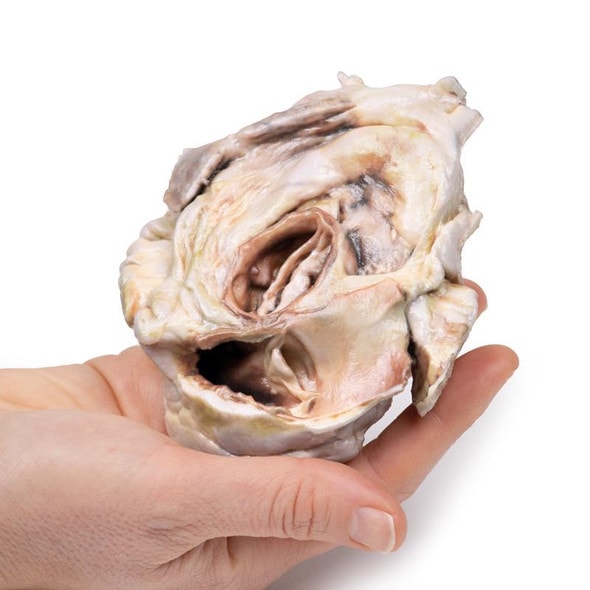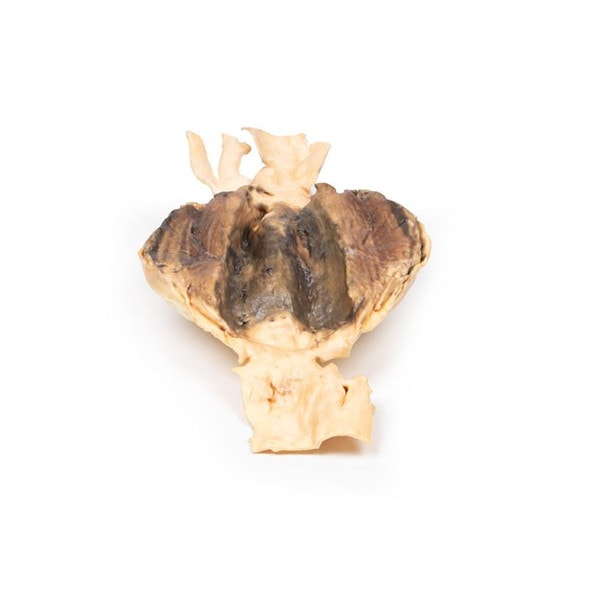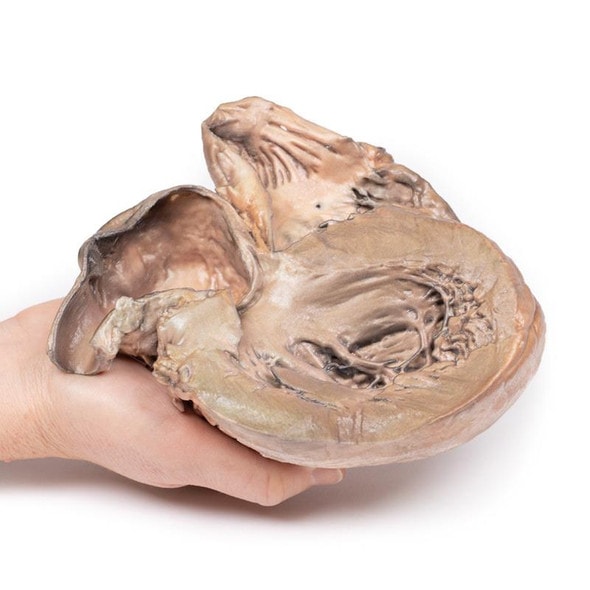Description
Developed from real patient case study specimens, the 3D printed anatomy model pathology series introduces an unmatched level of realism in human anatomy models. Each 3D printed anatomy model is a high-fidelity replica of a human cadaveric specimen, focusing on the key morbidity presentations that led to the deceasement of the patient. With advances in 3D printing materials and techniques, these stories can come to life in an ethical, consistently reproduceable, and easy to handle format. Ideal for the most advanced anatomical and pathological study, and backed by authentic case study details, students, instructors, and experts alike will discover a new level of anatomical study with the 3D printed anatomy model pathology series.
Clinical History
A 64-year old woman presented with a story of chest pain for 5 months, associated with breathlessness and wheezing for 4 months. On examination, she was dyspnoeic, with an expiratory wheeze, left-sided crepitations and signs of a right pleural effusion. The pulse rate and blood pressure were normal. There was a precordial systolic murmur and a heaving apex beat in the 5th left intercostal space 10 cm from the midline. There was no peripheral oedema. The patient died 4 days after admission.
Pathology
The heart has been opened to display the left ventricle and associated valves. The aortic valve has 2 cusps instead of the usual three. The valves are otherwise normal apart from patchy slight thickening. The aortic origins of the left and right coronary arteries are widely patent, as is the left circumflex coronary artery, seen cut transversely in the atrioventricular groove at the right hand lower edge of the specimen. There is dense pericardial fibrosis and adhesions on the posterior side of the specimen, suggestive of a constrictive pericarditis. The cause of this is not apparent from the history. At autopsy, there was ascites, a small shrunken cirrhotic liver, bilateral pleural effusions (R>L), and right pulmonary collapse. The cause of death was liver cirrhosis and failure, possibly consequential to the above-described constrictive pericarditis. The bicuspid aortic valve was an incidental finding.
Further Information
Bicuspid aortic valve is a more common congenital anomaly than widely appreciated as it may remain asymptomatic till later in life. The condition predisposes to the development of calcific aortic stenosis, usually in the 5th to 7th decades of life. They may occur alone or as part of a congenital syndrome, such as Tetralogy of Fallot. The latter is a combination of four congenital abnormalities, including a ventricular septal defect, pulmonary valve stenosis, a misplaced aorta and a right ventricular hypertrophy.
Bicuspid aortic valves have unequal cusp sizes usually as a result of two or the three normal cusps being fused together. This can lead to greater valvular dysfunction. Patients with bicuspid aortic valves are at high risk of aortic dilatation and dissection.
Bicuspid aortic valves are more likely to become calcified in older age than tricuspid aortic valves, and this is due to abnormal motion and turbulence caused by the unequal leaflet sizes.
With increasing age, patients can develop aortic stenosis or aortic regurgitation. When these become severe, symptoms associated with dyspnoea and reduced exercise tolerance may develop. This may be the first sign of a bicuspid aortic valve. Diagnosis of bicuspid aortic valves is confirmed using transthoracic echocardiogram.
Advantages of 3D Printed Anatomical Models
- 3D printed anatomical models are the most anatomically accurate examples of human anatomy because they are based on real human specimens.
- Avoid the ethical complications and complex handling, storage, and documentation requirements with 3D printed models when compared to human cadaveric specimens.
- 3D printed anatomy models are far less expensive than real human cadaveric specimens.
- Reproducibility and consistency allow for standardization of education and faster availability of models when you need them.
- Customization options are available for specific applications or educational needs. Enlargement, highlighting of specific anatomical structures, cutaway views, and more are just some of the customizations available.
Disadvantages of Human Cadavers
- Access to cadavers can be problematic and ethical complications are hard to avoid. Many countries cannot access cadavers for cultural and religious reasons.
- Human cadavers are costly to procure and require expensive storage facilities and dedicated staff to maintain them. Maintenance of the facility alone is costly.
- The cost to develop a cadaver lab or plastination technique is extremely high. Those funds could purchase hundreds of easy to handle, realistic 3D printed anatomical replicas.
- Wet specimens cannot be used in uncertified labs. Certification is expensive and time-consuming.
- Exposure to preservation fluids and chemicals is known to cause long-term health problems for lab workers and students. 3D printed anatomical replicas are safe to handle without any special equipment.
- Lack of reuse and reproducibility. If a dissection mistake is made, a new specimen has to be used and students have to start all over again.
Disadvantages of Plastinated Specimens
- Like real human cadaveric specimens, plastinated models are extremely expensive.
- Plastinated specimens still require real human samples and pose the same ethical issues as real human cadavers.
- The plastination process is extensive and takes months or longer to complete. 3D printed human anatomical models are available in a fraction of the time.
- Plastinated models, like human cadavers, are one of a kind and can only showcase one presentation of human anatomy.
Advanced 3D Printing Techniques for Superior Results
- Vibrant color offering with 10 million colors
- UV-curable inkjet printing
- High quality 3D printing that can create products that are delicate, extremely precise, and incredibly realistic
- To improve durability of fragile, thin, and delicate arteries, veins or vessels, a clear support material is printed in key areas. This makes the models robust so they can be handled by students easily.



